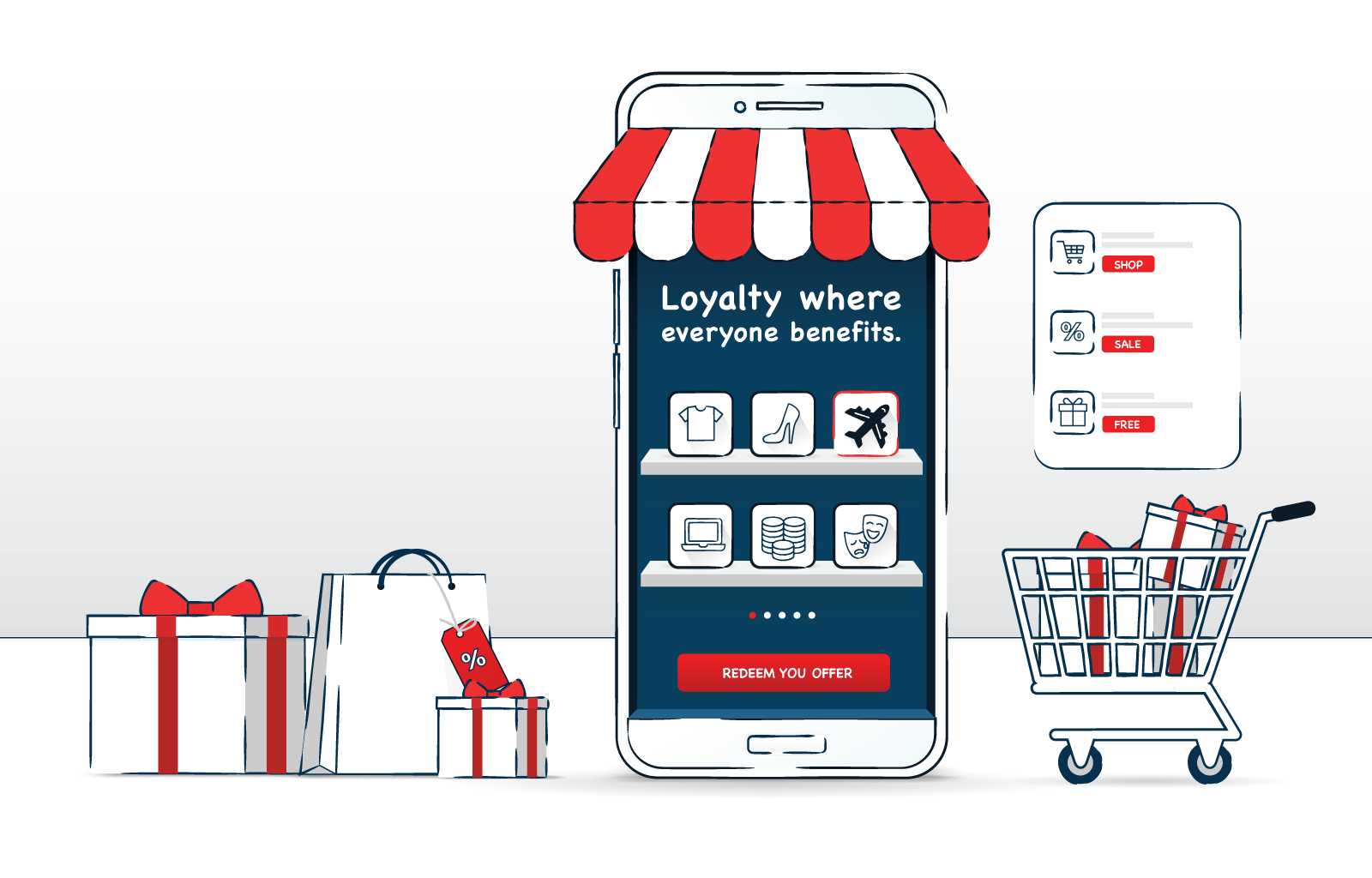For decades, merchant loyalty benefits came in the form of “punch 10” cards, barcoded keychains, and phone number based rewards. But as consumers abandon these outdated behaviors, merchants are looking for new ways to keep them engaged, and credit card issuers are perfectly positioned to offer a scalable, digital solution.
Currently, most credit card loyalty programs look like this:
- customers spend money to earn points
- customers redeem points with major brands partnered with the issuer
There are a few limitations to this model. For one, it doesn’t scale well, locking out the majority of merchants, including direct-to-consumer merchants, who are capturing a larger share of consumer spending each year.
The current points programs require significant involvement across legal, technical and marketing teams, limiting card issuers’ abilities to include a diversity of merchants in their rewards platform. Airline miles are great, but consumers also shop for clothing, dine out, and sign up for increasingly popular box subscriptions. Customers crave broad reward programs that are personalized to their various spending habits, and by tapping into modern fintech capabilities, card issuers can begin to offer merchants a rewards platform at scale.
It’s Not (All) About the Money
Rather than relying solely on passive point-earning, loyalty programs can do more to inspire action from customers. One approach is to offer up-front card membership benefits that don’t require spending first. Chase, for instance, offers cardholders a free year-long subscription to DoorDash’s DashPass as long as they use their Chase card. Cards like UBER’s Barclays card offer free device protection to holders who use the card to pay their monthly cell phone bill.
This doesn’t mean issuers have to ditch points altogether. Rather, they should consider self-serve rewards platforms that broaden the range of merchants offering a diversity of perks to cardholders.
By involving merchants of all sizes in a rewards marketplace, card issuers can give customers access to coupons and incentives for using their credit card at direct-to-consumer businesses in addition to popular brands. Cardholders could even use their credit card app to manage multiple loyalty accounts across their favorite brands and automatically earn rewards when they use their linked card.
Goodbye phone numbers and punch cards.
Card issuers can now create a digital marketplace of loyalty rewards where customers review offers from their favorite brands, authenticate their accounts, and even get redirected to merchant sites to begin shopping immediately—streamlining the offer-to-purchase customer journey. A reward platform like this helps online merchants build customer loyalty and increase order size and frequency.
With this model, merchants reward customers for making purchases with a linked card, and card issuers reward them for shopping with their favorite brands. By incentivizing customers to repeat this double-rewards experience, everybody wins.
Welcoming Mom-and-Pops to Rewards
There’s a reason why mom-and-pop shops aren’t already included in most credit card loyalty programs. Historically, creating these partnerships was too complex and unscalable to see significant ROI.
Thanks to today’s digital platforms, that’s no longer a problem. Merchants can easily implement, offer, and scale their own loyalty programs within an issuer’s rewards marketplace. Card issuers don’t need to keep a balance sheet of earned and spent customer reward points. Instead, they can simply host merchants’ offers on their platforms alongside issuer-funded offers, making it easier for customers to find and take advantage of the ones that align with their spending habits.
This model gives cardholders access to a much larger reward catalog without the need for lengthy negotiations and contract-building between issuers and merchants. A streamlined digital process could allow merchants to initiate a partnership and provide all necessary information to add their business to the card issuer’s marketplace.
Once complete, the merchant gets to expand their customer reach via the marketplace, and the card issuer gets increased usage from customers when they make purchases. Digital reward programs can even help merchants connect online advertising campaigns with in-store and online purchases.
Rewards platforms also enable more cost-effective acquisition than methods like affiliate programs or inbound marketing, which can take time to generate real ROI. With easy merchant onboarding and immediate program activation (customers can begin using discounts and memberships to make purchases as soon as a brand goes live in the marketplace), issuers and merchants enjoy immediate returns for their efforts.
Creating Symbiotic and Sustainable Loyalty Programs
After the events of 2020, consumers are more aware than ever of the importance of supporting their community and shopping small, and their habits show it. The opportunity is ripe for card issuers to adapt and invite brands of all sizes into their loyalty programs.
With loyalty programs that are relevant to customers, card issuers don’t need affiliate sites and other indirect means of acquisition. Instead, they can foster a direct, symbiotic relationship between cardholders, merchants and their brand, creating a new cycle of loyalty where everyone benefits.
